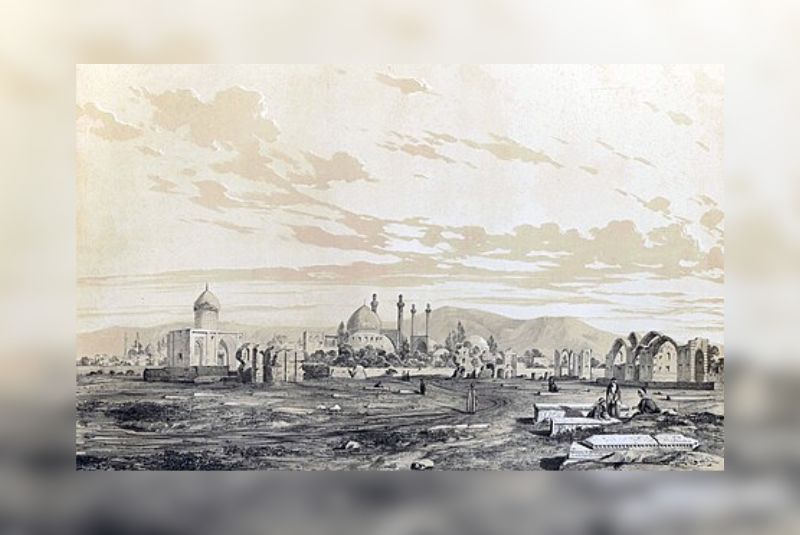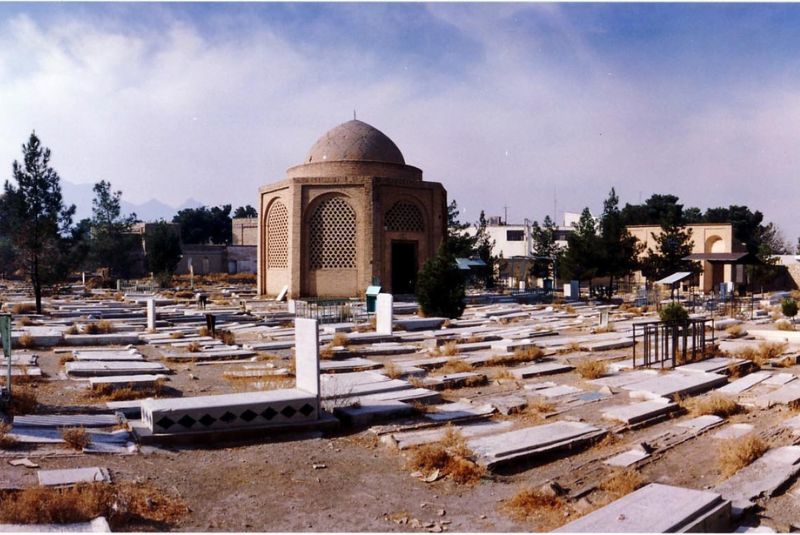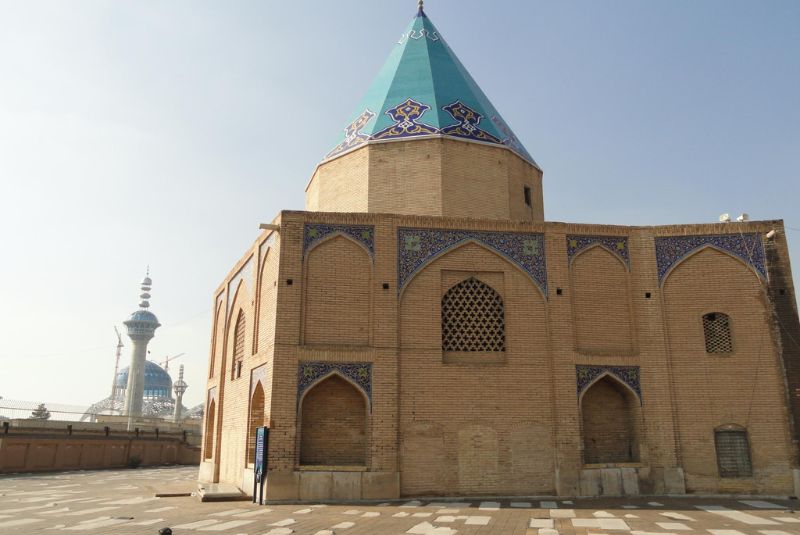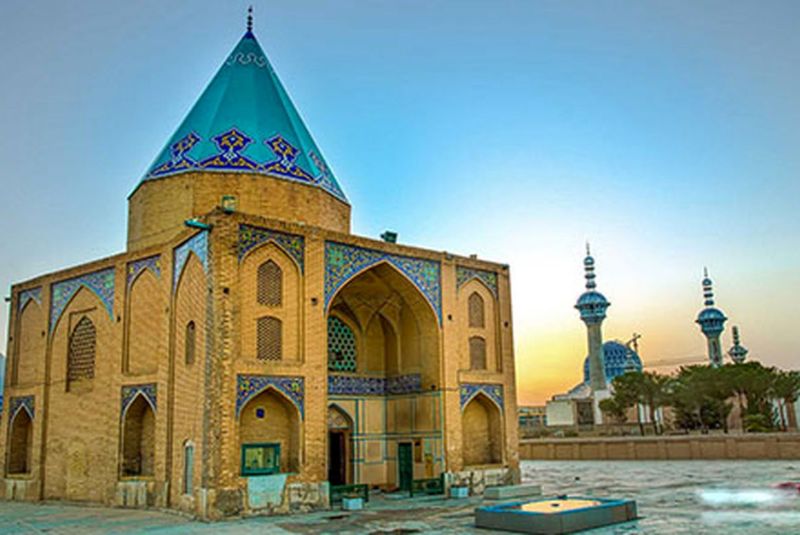Takht-e Foulad | Gateway to Iran's Past
Among Isfahan's many treasures lies Takht-e Foulad, a significant historical site that has witnessed centuries of Iranian history unfold.
This ancient cemetery, dating back to the 10th century, holds within its grounds the stories of scholars, mystics, and rulers who shaped the region's cultural and spiritual landscape. In this article, we delve into the depths of Takht-e Foulad, unraveling its history, exploring its architectural marvels, and shedding light on its enduring significance in the annals of Iranian heritage.
History and Significance of Takht-e Foulad

Historical background of Takht-e Foulad
The history of Takht-e Foulad is as rich and complex as the city of Isfahan itself. Dating back to the 10th century, this ancient cemetery has been witness to numerous historical events and cultural transformations that have shaped Iran's identity over the centuries. Its origins are somewhat mysterious, with some historians speculating that it may have existed even before the Islamic period, making it one of the oldest burial grounds in the region.
Significance of the Cemetery
Throughout its long history, Takht-e Foulad has held immense significance in Iranian culture and spirituality. As a final resting place for scholars, mystics, and dignitaries, it has become a symbol of reverence and respect for the country's intellectual and religious heritage. The cemetery served not only as a burial ground but also as a center for reflection, meditation, and scholarly discourse, attracting pilgrims and seekers from far and wide.
Notable Figures Buried in Takht-e Foulad
One of the most remarkable aspects of Takht-e Foulad is the array of notable figures interred within its grounds. From revered mystics to influential poets and scholars, the cemetery is a treasure trove of Iranian intellectual history. Among its most distinguished occupants is Baba Ruknuddin, a renowned Sufi saint and philosopher whose teachings continue to inspire spiritual seekers to this day. Another notable figure is Baba Foulad Halvai, a revered mystic whose tomb stands as a testament to his profound spiritual wisdom.
In addition to these spiritual luminaries, Takht-e Foulad is also home to the tombs of prominent scholars and poets whose contributions have left an indelible mark on Iranian culture. Mirfenderski, a celebrated poet and calligrapher, lies buried within the cemetery, his legacy immortalized in the elegant verses inscribed on his tombstone. Similarly, the tomb of Aghabashi, a renowned scholar and jurist, serves as a reminder of the intellectual prowess that flourished within the walls of Takht-e Foulad.
| Suggestion: Monar Jonban - The Mystery of Iran's Shaking Minarets
Architecture and Features of Takht-e Foulad

Architectural Elements of Takht-e Foulad
The architectural landscape of Takht-e Foulad is a testament to the rich cultural tapestry of Isfahan, with its diverse array of structures reflecting the city's storied history. One of the most striking features of the cemetery is its mosques, which serve as both places of worship and architectural marvels in their own right. These mosques, dating back to the Safavid and Qajar periods, exhibit a blend of Islamic and Persian architectural styles, characterized by intricate tilework, ornate calligraphy, and graceful domes.
Various Structures within the Cemetery
Among the most notable mosques within Takht-e Foulad is the Ruknul-Molk Mosque, a masterpiece of Safavid architecture renowned for its exquisite tilework and intricate geometric patterns. Another significant structure is the Takyeh Khansari Mosque, which boasts a majestic dome and elegant archways adorned with delicate floral motifs. These mosques not only serve as places of prayer but also as monuments to the artistic and cultural heritage of Isfahan.
In addition to mosques, Takht-e Foulad is home to a myriad of mausoleums, each one a testament to the spiritual and intellectual legacy of Iran. These mausoleums, adorned with intricate tilework and elaborate carvings, house the tombs of scholars, poets, and mystics, preserving their memory for future generations. One such mausoleum is that of Mirfenderski, a renowned poet and calligrapher whose tomb is adorned with elegant verses from his own pen. Similarly, the mausoleum of Baba Ruknuddin, a revered Sufi saint, is a testament to his profound spiritual wisdom and influence.
Artistic Significance of Takht-e Foulad's Features
In addition to mosques and mausoleums, Takht-e Foulad features a network of courtyards and gardens, providing tranquil spaces for reflection and contemplation. These courtyards, surrounded by lush greenery and fragrant flowers, offer visitors a respite from the hustle and bustle of city life, inviting them to connect with nature and spirituality in a serene setting. The meticulous design of these courtyards, with their symmetrical layouts and flowing water features, reflects the Islamic principles of harmony and balance, creating a sense of peace and tranquility for all who enter.
| Discover: Isfahan Historical Palaces
Takyehs within Takht-e Foulad

A takyeh, in the context of Takht-e Foulad, refers to a Sufi retreat or monastery, traditionally used as a place of worship, meditation, and spiritual instruction by Sufi mystics and scholars. These structures often feature a central courtyard surrounded by cells or rooms for meditation, living quarters, and communal gathering spaces. Takyehs played a significant role in the religious and cultural life of Isfahan, serving as centers of learning and devotion for centuries.
Within the sprawling expanse of Takht-e Foulad, a multitude of takyehs, or Sufi retreats, offer visitors a glimpse into the spiritual and cultural heritage of Isfahan. Each takyeh is imbued with its own unique history and architectural characteristics, contributing to the rich tapestry of the cemetery's landscape.
| Read more: Isfahan Mosques You Should Visit
Notable Takyehs
One of the most renowned takyehs within Takht-e Foulad is Takyeh Baba Ruknuddin, dating back to the Ilkhanid period. This ancient retreat is believed to be the burial place of Ruknuddin Masoud bin Abdullah Beyzawi, a mystic of the 8th century AH. The architecture of Takyeh Baba Ruknuddin is striking, with its exterior geometrically designed as a pentagon, and its main axis corresponding to the qiblah. The outer dome of the mausoleum features 12 faces, thought to be inspired by the hats worn by dervishes.
Another notable takyeh is Takyeh Mirfenderski, named after Mirfenderesgi Hakim, a prominent scholar and philosopher of the Safavid era. This takyeh consists of a courtyard, several cells, and Mirfenderesgi's residence. The architecture of Takyeh Mirfenderski is characterized by its four-eivan arrangement, with a number of cells built around the courtyard. An ornate inscription in the handwriting of Mir Emad Hassani, a renowned calligrapher of the Safavid era, adorns the takyeh, serving as a testament to its antiquity.
Takyeh Khatunabadi stands out for its unique construction style, encompassing features of a takyeh, mosque, and school simultaneously. This takyeh is the final resting place of Mir Mohammad Ismail Khatunabadi, also known as Sofia Master. Its constituent parts include a courtyard, entrance, several cells, tombs, sub-courts, and a northern porch. The mausoleum, with its cruciform plan, boasts two floors, the second of which consists of a middle room above Mir Ismail's tomb and a balcony facing it.
Takyeh Lesan al-Arz, believed to date back to the Daylam period, is another significant retreat within Takht-e Foulad. This takyeh features a large courtyard, a mansion, and a mosque, with the central building known as the Khaneqah of Galdiri. Rectangular rooms nested in a series of nine are connected by corridors, while an inscription adorned with Kufic script and plaster art decorates the historical building.
These takyehs, among many others, offer visitors a fascinating glimpse into the spiritual and architectural heritage of Isfahan. From the geometric elegance of Takyeh Baba Ruknuddin to the ornate inscriptions of Takyeh Mirfenderski, each retreat tells a unique story of devotion, scholarship, and artistic innovation, making Takht-e Foulad a truly remarkable destination for exploration and discovery.
| Suggestion: Best Restaurants in Isfahan
Takht-e Foulad: Visit and Accessibility

Visiting Takht-e Foulad offers a unique glimpse into Iran's rich cultural heritage. The cemetery is typically open to visitors from 9:00 AM to 5:00 PM, allowing ample time for exploration. Located in Isfahan, accessing Takht-e Foulad is relatively convenient for tourists. Various transportation options are available, including public buses and taxis, which can drop visitors off near the site. For those driving, Takht-e Foulad can be reached via Mosalla Street from the west, Azadegan Street from the south, Sajjad and Feiz streets from the east, and Valeh Street from the north. The Azadegan Rapid Bus (BRT) station provides a convenient stop for those using public transportation. Once at the cemetery, visitors are encouraged to explore respectfully, bearing in mind the site's cultural and historical significance. Comfortable walking shoes are advisable, as the terrain may be uneven in places. Additionally, bringing along water and sunscreen is recommended, especially during warmer months. Visitors should be mindful of any posted rules or regulations and refrain from disturbing the graves or monuments. By approaching the site with reverence and curiosity, visitors can fully appreciate the beauty and historical importance of Takht-e Foulad.
| Discover: Isfahan Traditional Bazaars
Finally!
Takht-e Foulad stands as a testament to Iran's rich history and cultural heritage. As one of Isfahan's most significant historical sites, it offers a captivating journey through centuries of Iranian civilization. From its mysterious origins dating back to pre-Islamic times to its role as a sacred burial ground for esteemed figures throughout history, Takht-e Foulad encapsulates the essence of Iran's past. Its diverse architectural styles, intricate designs, and the stories engraved in each tombstone make it a treasure trove of cultural significance. For travelers seeking to delve into Iran's fascinating history, a visit to Takht-e Foulad is a must. Whether admiring its stunning architecture, paying respects to the notable figures laid to rest here, or simply soaking in the tranquil ambiance, Takht-e Foulad promises a memorable experience that connects visitors with Iran's illustrious past.
Share your story!
Comment below and let us know about your Experience.
Your story inspires others!


Comment
Leave a Comment